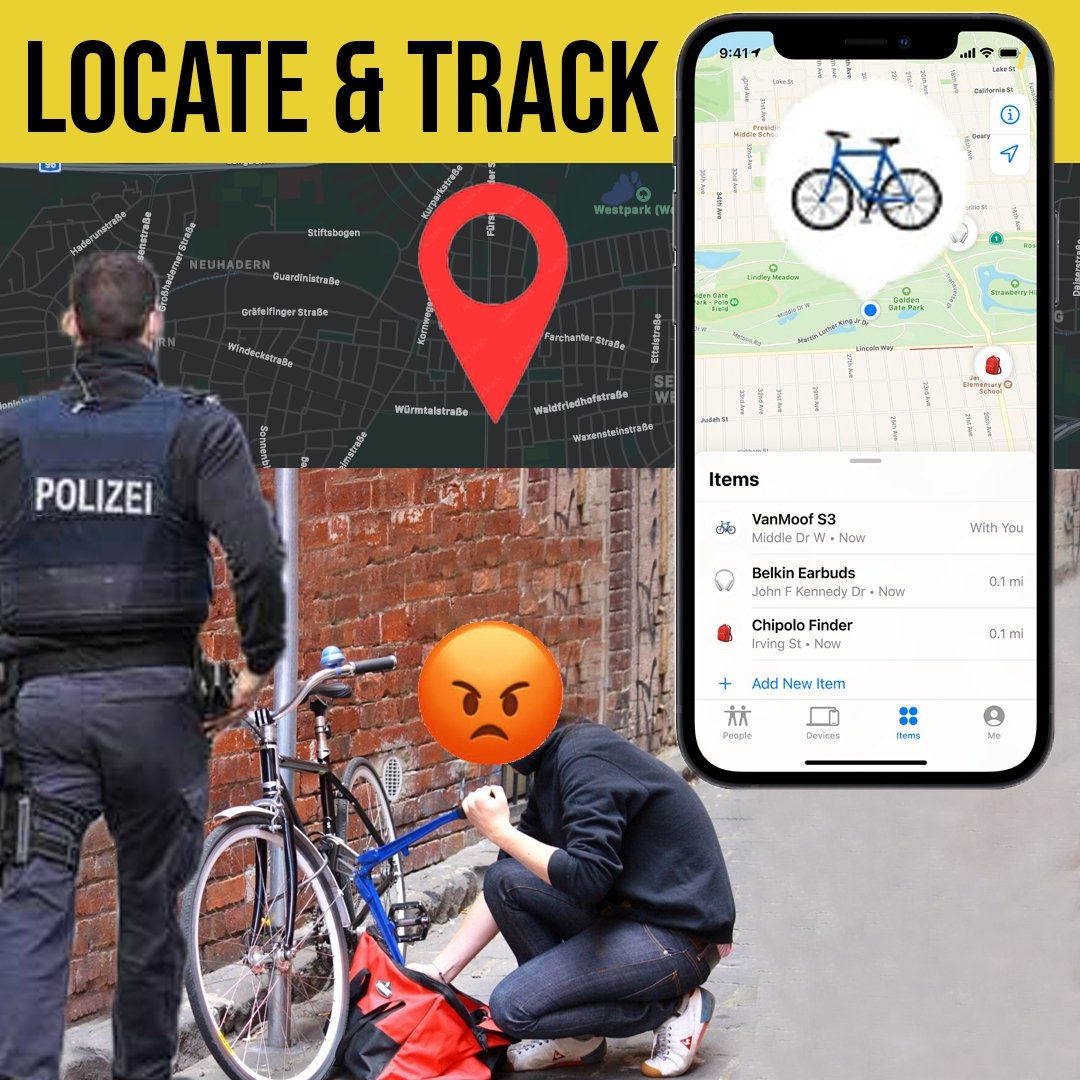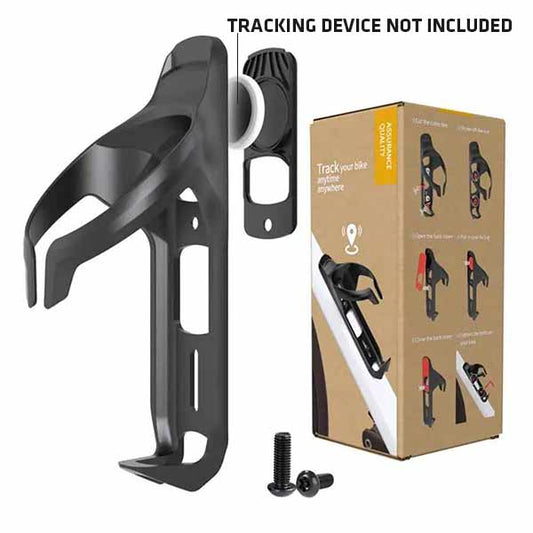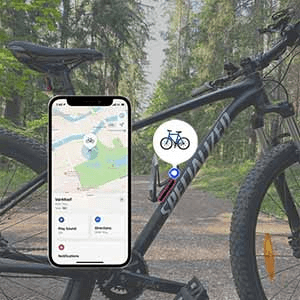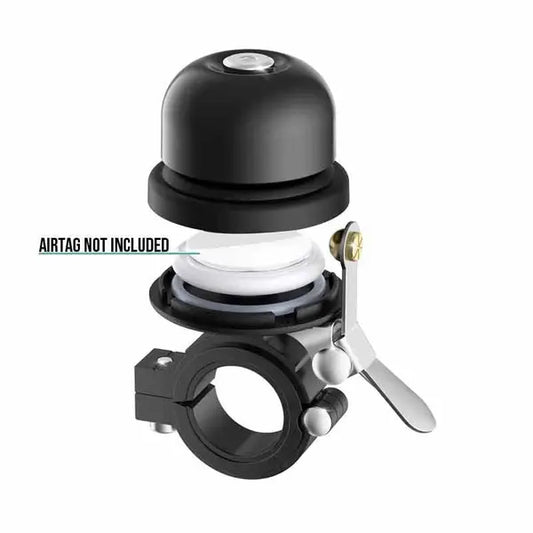How to Choose the Right Bike?
Finding the perfect bicycle can transform your daily commute, weekend adventures, or fitness routine. With countless options available—from sleek road bikes to rugged mountain bikes and versatile hybrids—selecting the right bike requires careful consideration of your specific needs, body dimensions, and riding goals.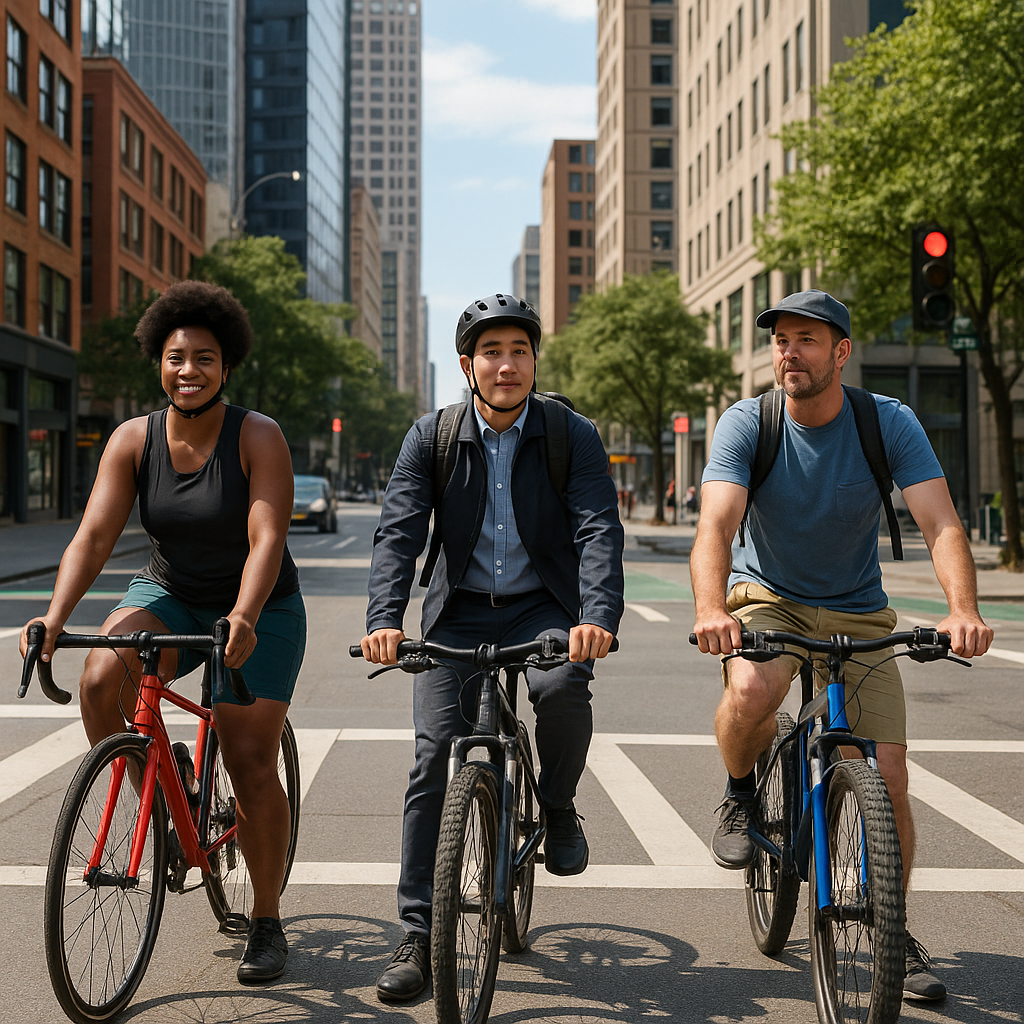
The right choice will provide years of enjoyment, while the wrong one might gather dust in your garage.
In this comprehensive guide, you'll discover how to assess your riding requirements, understand different bike types, find your ideal size, evaluate essential components, make smart purchasing decisions, and protect your investment with proper accessories. By the end, you'll have the knowledge to confidently select a bicycle that perfectly matches your lifestyle, comfort needs, and budget. Let's explore the world of cycling options to find your perfect match and protect your bicycle from theft with proper security measures.
Determining your bike needs and riding style
Before browsing catalogs or visiting stores, take time to reflect on how and where you plan to ride. Your cycling aspirations directly influence which bicycle category will serve you best, preventing costly mistakes and ensuring satisfaction with your purchase.
Consider these key questions about your cycling goals:
- where will you be riding most frequently? (city streets, smooth paths, gravel roads, rugged trails)
- what distances do you expect to cover regularly? (short neighborhood trips, medium commutes, long fitness rides)
- how important is speed versus comfort in your riding experience?
- will you be carrying cargo or children?
- do you have any physical limitations affecting your position or endurance?
Experienced cyclists recommend categorizing your primary riding purpose first. If you'll mainly pedal to work through urban environments, your needs differ substantially from someone planning weekend trail adventures. Fitness enthusiasts seeking long-distance road rides require different features than casual cyclists enjoying family outings on bike paths.
Weather conditions and terrain in your area also impact your selection. Riders in rainy regions might prioritize fender compatibility and disc brakes, while those facing significant hills might focus on gearing options or even electric assistance. By clearly defining your cycling objectives and environmental factors, you'll narrow down suitable bicycle categories dramatically.
Types of bikes and which suits you best
With your riding purposes defined, let's examine the major bicycle categories and their ideal use scenarios. Each type offers distinct advantages for specific riding environments and goals.
Road bikes
Designed for speed and efficiency on paved surfaces, road bicycles feature lightweight frames, narrow tires, and drop handlebars that position riders for aerodynamic performance. These machines excel at covering distances quickly on smooth pavement.
Ideal for: Fitness riding, long-distance travel, commuting on good roads, and competitive cycling events.
Advantages: Lightweight, fast, efficient power transfer, aerodynamic positioning.
Limitations: Less comfortable on rough surfaces, more aggressive riding position, generally narrower tire clearance.
Mountain bikes
Built for off-road adventures, mountain bicycles feature durable frames, wide knobby tires, flat handlebars, and typically include suspension systems to absorb trail impacts. These rugged machines prioritize stability and control on challenging terrain.
Ideal for: Trail riding, forest paths, rocky terrain, steep descents, and technical obstacles.
Advantages: Excellent stability, superior traction, comfortable upright position, durable construction.
Limitations: Heavier, slower on pavement, suspension can reduce pedaling efficiency for road use.
Hybrid bikes
As the name suggests, hybrid bicycles blend elements from road and mountain categories to create versatile all-rounders. With medium-width tires, flat handlebars, and comfortable geometry, these machines adapt well to varied conditions.
Ideal for: Commuters in mixed environments, recreational cyclists, fitness riders seeking comfort, and urban explorers.
Advantages: Versatility across various surfaces, comfortable upright position, good visibility in traffic, easier mounting/dismounting.
Limitations: Jack-of-all-trades but master of none—less efficient than road bikes on pavement, less capable than mountain bikes on rough terrain.
Specialized bike types
Beyond the three main categories, several specialized options address specific needs:
- Gravel bikes: Similar to road bicycles but with wider tires and more stable geometry for unpaved roads and light trails
- Electric bikes: Feature motor assistance to extend range, flatten hills, and make cycling accessible to more riders
- Folding bikes: Compact designs that collapse for storage in apartments or multi-modal commuting with public transit
- City bikes: Emphasize comfort, upright positioning, and practical features like built-in racks and lights
- Touring bikes: Designed for long-distance loaded travel with stable handling and mounting points for gear
- Kids' bikes: Scaled appropriately for children with simplified controls and durable construction
Commuters in urban areas may prefer hybrids or city bikes for their comfort and versatility, while weekend warriors might select a mountain bike for trail adventures. Those seeking fitness might choose a road bicycle for efficient exercise. Most beginners benefit from hybrid models that allow exploration of different riding styles before specializing later.
How to choose the correct bike size and fit
Finding the right bicycle dimensions ranks among the most crucial aspects of your selection process. Proper fit ensures comfort, prevents injuries, maximizes efficiency, and ultimately determines whether you'll enjoy riding your new purchase.
Unlike clothing sizes, bicycle measurements can seem complex. Frame size typically refers to the length of the seat tube, measured in centimeters for road bikes and inches for mountain bikes. However, modern geometry variations mean two "medium" frames from different manufacturers might fit quite differently.
To determine your ideal frame size:
- Measure your height and inseam (inside leg) length while wearing shoes
- Consult the manufacturer's size chart for their specific recommendations
- Consider your proportions—those with longer torsos might need different sizing than the chart suggests
- When possible, test ride before purchasing
Beyond basic frame size, several other measurements affect comfort:
- Standover height: Ensures sufficient clearance when straddling the top tube (especially important for off-road riding)
- Reach: Affects how stretched out you'll feel toward the handlebars
- Stack: Determines handlebar height relative to the saddle
- Crank length: Should match your leg dimensions for optimal pedaling mechanics
Most bike shops recommend in-person fittings, particularly for your first quality bicycle purchase.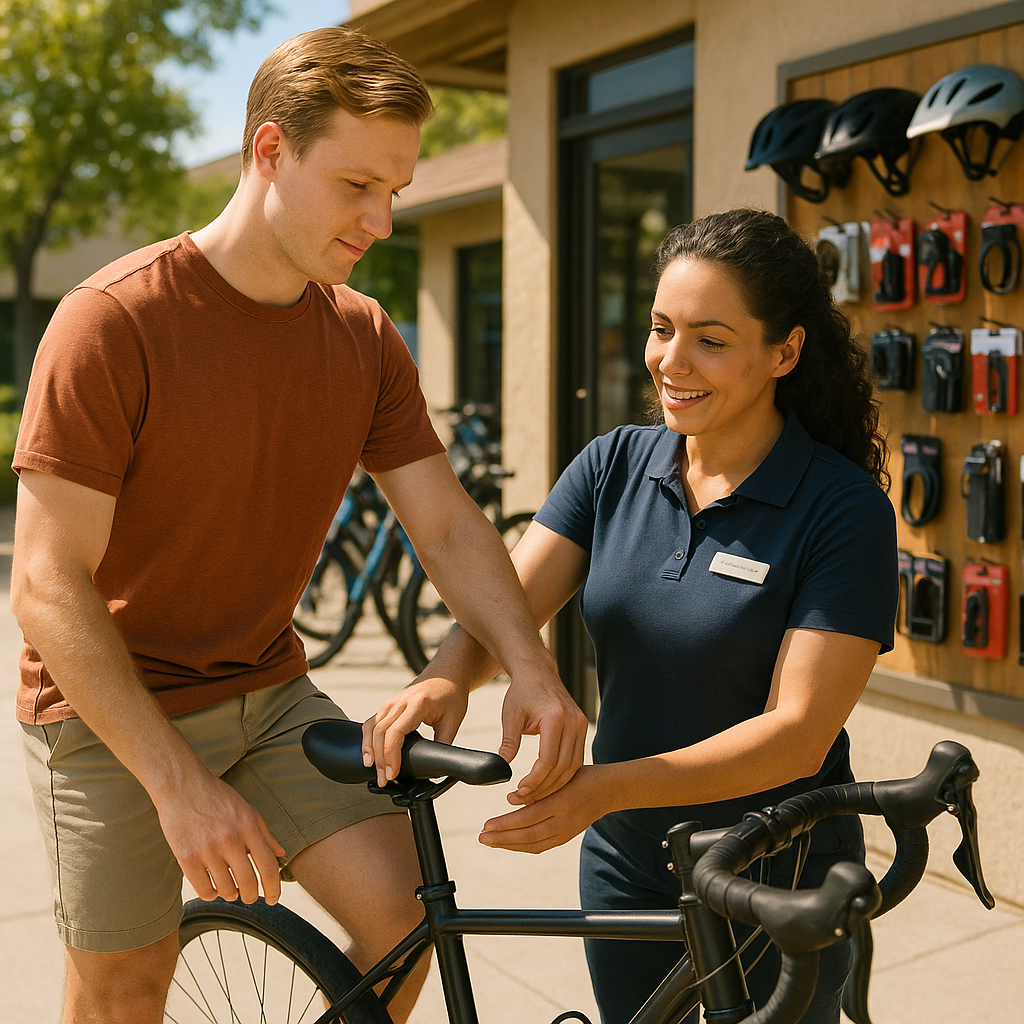
Professional fitters can suggest frame sizes and component adjustments based on your flexibility, proportions, and riding goals. This service often pays dividends in comfort and injury prevention ending the debate on bike wheel sizes and other fit-related considerations for your specific body type.
Essential bike features and component choices
Understanding key bicycle components helps you evaluate options within your price range and prioritize features that matter most for your riding style.
Frame materials
The frame forms the bicycle's foundation, affecting weight, ride quality, durability, and price: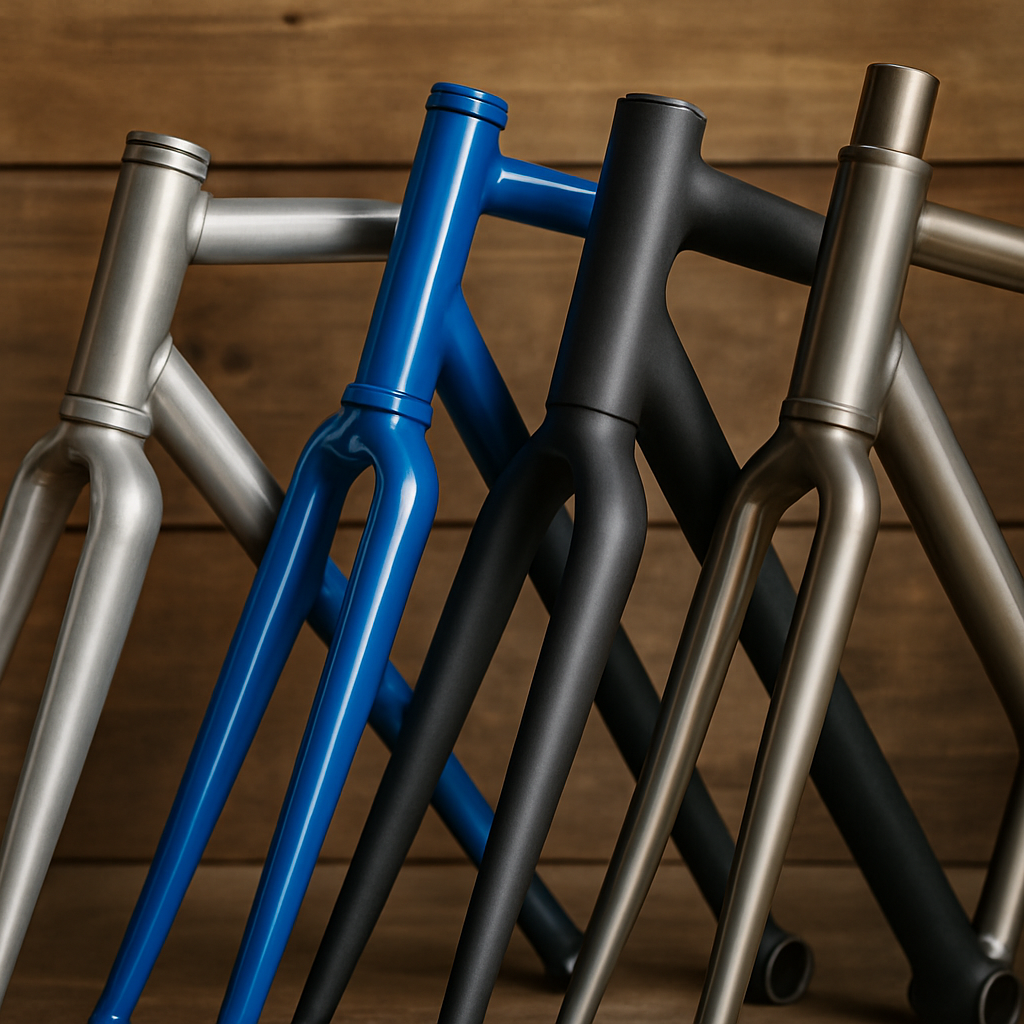
- Aluminum: Lightweight, affordable, and resistant to corrosion. Provides responsive handling but can transmit more vibration. Most bike shops suggest aluminum frames at entry-level budgets for their light weight and low maintenance.
- Steel: Offers a smooth, compliant ride with excellent durability. Heavier than aluminum but absorbs road vibration better. Popular for touring and commuter bicycles.
- Carbon fiber: Extremely lightweight with tunable ride characteristics. Dampens vibration while maintaining stiffness. Premium price but allows precise engineering of frame properties.
- Titanium: Combines light weight with comfort and legendary durability. Resists corrosion naturally but comes at a premium cost.
Groupset components
The drivetrain and braking system significantly impact performance and maintenance:
- Gears: More speeds aren't necessarily better—consider range instead. Entry-level bicycles often feature 7-8 speeds, while premium options offer 11-12. Riders facing hills need wider gear ranges.
- Shifters: Range from basic grip shifters to sophisticated integrated brake/shift levers. Higher-end components offer crisper shifting and better durability.
- Brakes: Rim brakes provide adequate stopping power in dry conditions at lower cost. Disc brakes offer superior performance in wet conditions and require less hand strength but add complexity.
Wheels and tires
These components dramatically affect ride quality and maintenance requirements:
- Wheel size: Standard diameters include 700c (road/hybrid), 29"/27.5"/26" (mountain), with smaller wheels for kids and some folding models.
- Tire width: Narrower tires (23-32mm) roll faster on smooth surfaces but provide less comfort. Wider tires (35-60mm+) offer better traction, comfort, and stability but with more rolling resistance.
- Tire tread: Smooth for pavement efficiency, knobby for off-road grip, or semi-slick for versatility.
Comfort features
Several components can be upgraded to enhance riding enjoyment:
- Saddle: Perhaps the most personal choice. Width should match your sit bone spacing, with cutouts or channels for pressure relief. Many cyclists replace stock saddles.
- Handlebars: Width, shape, and position affect comfort and control. Drop bars offer multiple hand positions but a more aggressive stance. Flat bars provide better visibility and control.
- Suspension: Front suspension forks absorb impacts on rough terrain but add weight and maintenance. Full suspension adds rear shock absorption for technical trails.
When considering component upgrades, investigate compatibility with your AirTag bike mount and other security accessories you might want to install later. Prioritize quality in contact points (saddle, grips, pedals) and safety features (brakes, tires) when making component choices.
Budgeting and where to buy your bike
Establishing a realistic budget helps narrow your options while ensuring you get necessary features for your riding style. Bicycle prices span from under $200 to well over $10,000, with meaningful quality improvements typically occurring at specific price points.
Budget considerations
When planning your purchase:
- Entry-level ($300-700): Functional bicycles with basic components suitable for casual or beginning riders. Expect aluminum frames, simpler drivetrains, and heavier overall weight.
- Mid-range ($700-1500): Significant quality improvements including better shifting, more refined geometry, and lighter weight. This range offers the best value for most recreational cyclists.
- Premium ($1500+): Higher-end components, lighter materials, and specialized features. Diminishing returns on investment but worthwhile for enthusiasts seeking performance advantages.
Remember to budget beyond the bicycle itself. Essential accessories typically add $150-300, including:
- Helmet ($40-200+)
- Quality lock ($30-120)
- Lights ($30-150)
- Repair kit and pump ($30-80)
- Water bottle and cage ($15-30)
Buying options compared
Each purchasing channel offers distinct advantages:
Local bike shops:
- Pros: Expert advice, test rides, proper sizing, assembly included, ongoing relationship for service, warranty support
- Cons: Potentially higher prices, limited selection in smaller stores
Online retailers:
- Pros: Wider selection, potentially lower prices, customer reviews, convenience
- Cons: No test rides, assembly required, sizing challenges, return shipping complications
Used market:
- Pros: Significant savings, higher-quality components for your budget, immediate availability
- Cons: Unknown history/condition, potential hidden problems, limited or no warranty
When purchasing used bicycles, check for frame damage (cracks, dents), excessive component wear, and proper operation of brakes and drivetrain. Ask about maintenance history and original purchase documentation. Many local bike shops offer pre-purchase inspections for a reasonable fee.
Consider timing your purchase during end-of-season sales (typically fall) when retailers discount current-year models to make room for new inventory. Many employers and insurance companies offer cycle-to-work schemes or wellness programs that provide substantial discounts on bicycle purchases.
Essential accessories and security upgrades
Equipping yourself with the right accessories enhances safety, convenience, and security. Start with these essentials before adding specialized gear as your cycling experience grows.
Safety essentials
- Helmet: The most critical safety accessory, properly fitted and certified to current safety standards
- Lights: Front white light and rear red light/reflector, legally required in most locations for riding after dark
- Bell or horn: For alerting pedestrians and other cyclists
- High-visibility clothing: Reflective elements or bright colors improve your visibility to motorists
Maintenance and convenience
- Tire pump: Floor pump for home use, plus mini-pump or CO2 inflator for on-ride emergencies
- Flat repair kit: Spare tube, tire levers, and patch kit
- Multi-tool: For mid-ride adjustments and basic repairs
- Water bottle and cage: Hydration remains essential for any ride
- Phone mount: For navigation or fitness tracking
Security options
Bicycle theft remains rampant in many areas. Protect your investment with:
- Primary lock: U-lock or heavy chain for securing the frame and rear wheel to immovable objects
- Cable lock: Secondary security for wheels and accessories
- Tracking device: Consider an AirTag bike saddle mount to discreetly monitor your bicycle's location
- Registration: Document your serial number and register with local police or bicycle registration services
For daily commuters, consider adding fenders to prevent road spray in wet conditions and racks or panniers for carrying items. Recreational riders might prioritize performance accessories like cycling computers or specialized clothing.
While some accessories seem optional initially, investing in quality safety and security items protects both your wellbeing and your financial investment in the bicycle. Start with the essentials, then expand your collection as you identify specific needs through regular riding.
Conclusion
Selecting the right bicycle involves thoughtful consideration of your riding needs, physical dimensions, component preferences, and budget constraints. Begin by honestly assessing where and how you'll ride most frequently. Then narrow your search to appropriate bicycle categories before finding the correct size and component specifications.
Remember these key steps:
- Define your primary riding purpose and environment
- Choose a bicycle type that matches those needs
- Determine your correct frame size through measurements and test rides
- Evaluate component options within your budget, prioritizing fit and safety
- Consider where to purchase based on service needs and test ride availability
- Budget for essential accessories, especially safety and security items
Take your time with this decision—a properly chosen bicycle provides years of enjoyment, health benefits, and practical transportation. Whenever possible, test ride multiple models to compare handling, comfort, and fit. Even slight differences in geometry or component positioning can significantly impact your riding experience.
Most importantly, select a bicycle you'll genuinely enjoy riding. The perfect bicycle on paper means nothing if it doesn't inspire you to get out and pedal regularly. With the right machine beneath you, every ride becomes an opportunity for adventure, fitness, or simple transportation pleasure.
Frequently asked questions
What's the best type of bike for beginners?
Most new riders benefit from hybrids or entry-level road/mountain bikes, depending on their intended use.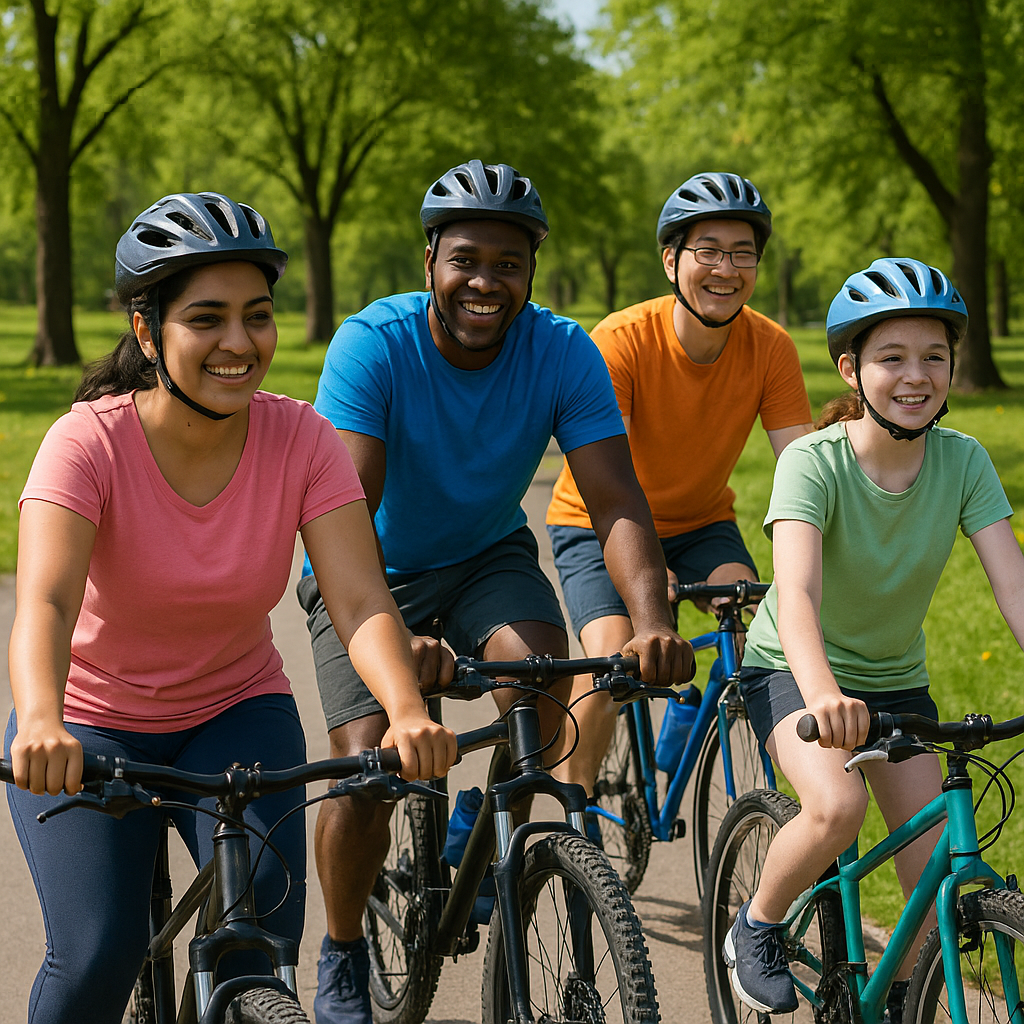
Hybrids offer versatility for mixed riding conditions, while specific types excel in their specialized environments.
How do I know what bike frame size I need?
Measure your height and inseam, then compare these with a manufacturer's size chart. For best results, try bikes in person or consult an expert at a local shop for proper sizing recommendations.
Should I buy a new or used bike?
New bikes offer warranty and fit support; used bikes are budget-friendly but require careful inspection. If buying used, check for frame damage, component wear, and have a shop perform a pre-purchase inspection if possible.
Are expensive bikes always better?
Not always: pay for the features you need; high-end bikes help with performance and weight but are not a must for every rider. The sweet spot for value typically lies in the mid-range price category.
What accessories do I need when starting out?
At minimum: helmet, lock, lights, pump, and a repair kit. These essentials ensure safety, security, and the ability to handle minor mechanical issues during rides.
